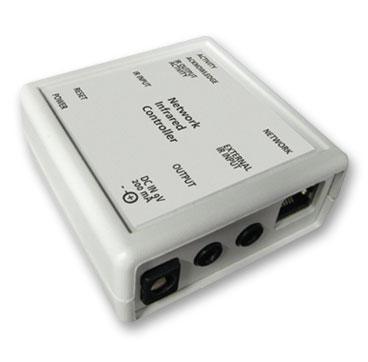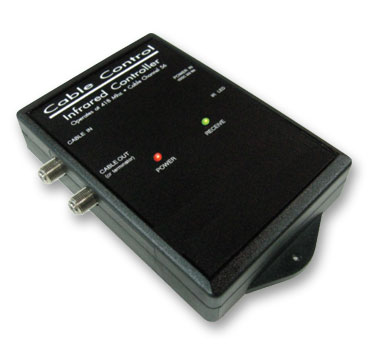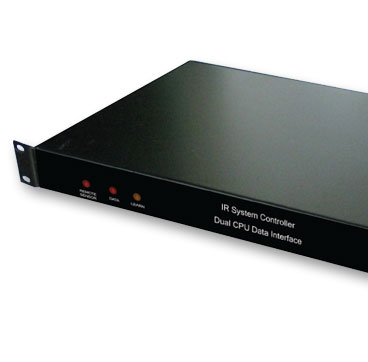eNet-IR
 Description
Description
The eNet-IR is a standalone network device that receives data packets across an ethernet network from a host PC running Control Point software. The packets are encoded infrared commands that have been captured and stored as files on the host. Each eNet-IR is uniquely addressed and will only respond to data packets that conform to the encoded format and include the eNet-IR device’s address. On receipt, these datagrams are reconstructed into the original infrared signal and sent out to an emitter LED attached to the output port of the eNet-IR unit.
Specifications
- Network transport protocol: UDP
- Device addressing: MAC addressing with reserved space
- Network addressing: standard ethernet class B, C or D
- External emitter LED port: 3.5 mm jack
- Power: 9 VDC @ 200 Ma
- Dimensions: (L x W x H) 2 3/8” x 2 3/8” x 1 1/8”
- Built in web server for administration
- LED panel indicators: Power, ACK, IR output activity, LAN activity.
RF Receiver and IR Data Decoder
 Description
Description
The RFIR-RX receiver unit connects to the RF distribution system through its coaxial input connector. A coaxial loop-through connector passes the RF information out for connection to an external device, such as a TV CATV input. The receiver unit is tuned to the carrier frequency of the RFIR-TX transmitter and the RFIR-RX decodes the transmitter’s data packets as they arrive. Each receiver unit is uniquely addressed and will only act on data packets that match its address. Addresses are configured by adjusting three rotary dials inside the unit. Each dial is set from 0 to 9. This allows for a total of 1,000 addresses. Special order requests allow up to 10,000 addresses. Once a valid data packet arrives with the correct address, the receiver unit converts the signal back to the original infrared signal and sends it out to a standard IR emitter diode for delivery to the target device.
Specifications
- Receiver frequency: tuned at 418 MHz (cable channel 56)
- RF signal I/O connector: F-type 75 ohm coaxial jack
- Loop through insertion loss: ~ 2 DB at 75 oms.
- IR emitter connection port: 3.5 mm mini mono jack.
- Power: 15 VDC @ 200 Ma
- Dimensions: (L x W x H) 5 3/8” x 3 3/4” x 1.0”
- On Power auto boot and self test.
- Power indicator: Red LED
- Activity indicator: Green LED
- Clam shell snap off front cover for tool free access to internal settings
RF Modulated IR Control Transmitter
 Description
Description
The RFIR-TX is an infrared signal control processor/transmitter that encodes infrared data signals into discrete packets that are communicated over RF distribution networks and is compatible with both analog and digital (QAM) networks. The RFIR-TX connects to a host PC by standard RS-232 COM serial port interface. Infrared control signals are captured through the RFIR-TX learning port and are stored on the host PC as files. These files are sent to the transmitter from the host PC’s serial port connection. Once the RFIR-TX receives these data files, they are encoded into individual packets for transport across the RF network using a specially designated carrier frequency. These packets are captured and decoded by the companion receiver unit (RFIR-RX) which processes them back to the original infrared signal and sends them out to an IR emitter diode attached to the target device’s infrared sensor.
Specifications
- Sends digital information at 418 MHz (cable channel 56).
- Connects to the control PC by standard RS-232 DB-9 connector mounted on the transmitter unit’s back panel.
- Baud rate 9600, 8, none, 1 protocol.
- Two separate F-connectors mounted on the transmitter back panel provide concurrent RF outputs.
- Delivers +56 Dbmv into 75 ohm from each of these RF output connectors for use with a CATV or MATV combiner.
- Signal attenuation up to 20 DB for each RF output is provided via back panel
adjustments. - A separate test output provides a fixed +36Dbmv.
- Front panel includes a power indicator, a data activity indicator and an integrated IR learner with indicators.
- Housed in a single RU high standard 19 inch rack mountable chassis.